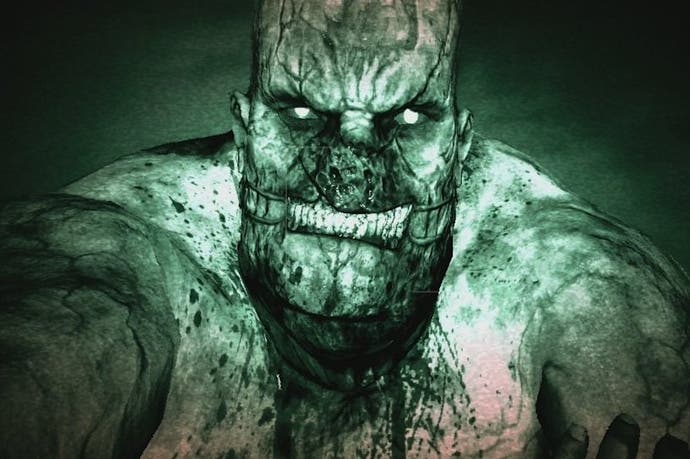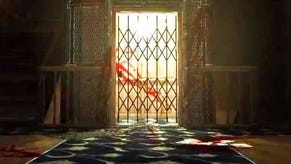Face-Off: Outlast
Spot the difference.
More than six months into the life of the new consoles and it's become clear that platform parity between Xbox One and PlayStation 4 is rare. Sure, the odd platformer or sports title, such as Strider or FIFA 14, have managed to achieve this but those are exceptions. Utilisation of the last-gen Unreal Engine 3 hasn't made much difference either, with cross-platform titles suffering from frame-rate or resolution discrepancies. In the case of Outlast though, developer Red Barrels and UE3 have come up trumps. And in these days the novelty of platform parity makes it kind of interesting to examine.
Perhaps it's because the developer has had time to optimise the game for each platform. While Outlast is fresh and new on Xbox One, the game was first released on the PC last summer and this February on PS4. The results are compelling: Outlast stands out as one the few cross-platform games designed to deliver 1080p and 60fps on both consoles. In fact, image quality is virtually identical between the two systems, with only a slight variation in default brightness separating the two. Anti-aliasing wise, both iterations make use of a post-process solution with all the hallmarks of FXAA. Thankfully, Outlast is a very dark game which makes heavy use of post-processing effects so texture blur is generally kept to a minimum. Overall, the game looks crisp and clean on both consoles to the point that it's almost impossible to tell the two apart just looking at screenshots.
On PC, the developers neglected to include any in-game adjustable anti-aliasing options, instead leaving this up to the users to enable externally. Forcing FXAA produces results in line with the console and generally looks fine within the confines of the asylum, but more advanced options including different forms of MSAA, SGSSAA, and even super-sampling can all be forced at the driver level as well. The results are predictably superior to FXAA, but the tight corridors of the asylum don't really benefit as greatly as most titles, save for the elimination of in-surface aliasing.
There's also the matter of texture filtering, which, on consoles at least, is fairly limited with obvious mip-map blurring visible at oblique angles. Comparing the two side by side reveals identical settings. Naturally, on the PC this isn't an issue at all provided that anisotropic filtering is forced at the driver level. The nature of the darkened environment does help minimise this issue but the extra boost to texture detail on the PC is certainly welcome.
Alternative comparisons:
Outside of image quality, Outlast is a game that focuses on a very limited and focused set of visual tricks. Taking place almost entirely in and around a dark, gruesome asylum, the game leans heavily into the contrast between light and shadow backed up by haunting post-process effects all working in tandem to build atmosphere. Character models can appear a bit rubbery at times but the rest of the visual design is solid and appropriately disgusting when it needs to be.
There is really only one tool available to the player in the form of a trusty camcorder. As such, most of the effects work is actually focused on what the camera sees. Enabling night vision creates a suitably green, depth-of-field laden view port while the standard camera view uses chromatic aberration to give the impression of looking through a cheap camera. Putting the camera away, then, completely eliminates these effects and produces a clean image. We're not always fans of chromatic aberration but, in this case, it works well to differentiate the normal view from that of the camera. For the most part, these effects are rendered identically across all three platforms with only a very subtle difference in the appearance of chromatic aberration on the PC enabling us to see a difference.
Putting the Xbox One and PS4 versions side by side it becomes clear that there are few notable differences between them. In certain rare cases we encountered a texture popping in slightly quicker on one platform or another (standard UE3 fare then) while in other cases, the intensity of certain dynamic lights could differ as well. The only puzzling difference we encountered concerns loading times, which are a bit faster on Xbox One. The initial load on PS4 is a good 35 seconds while Xbox One is finished in just 20. Thankfully loading screens do not appear frequently, preventing this from becoming an issue. Either way, these are really just nitpicks in the grand scheme of things and the two versions are as close a match as one could expect.
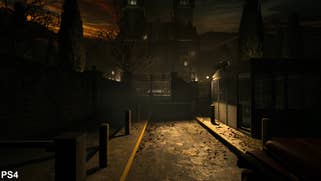

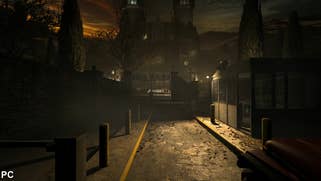



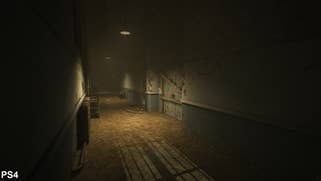



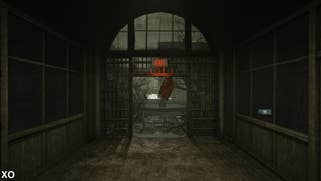
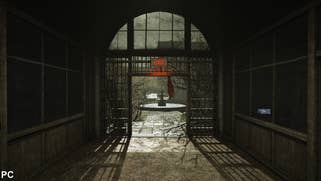



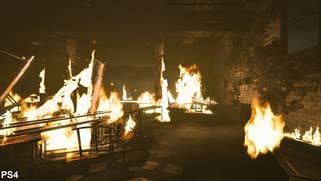





PC owners are treated to a few extra features as well in the form of higher-resolution shadows and motion blur. The motion blur is of the full-screen variety and affects both camera and player movement equally. This feature does come off a bit strong, however, and doesn't appear to use a huge number of samples, leading to obvious artefacts. When Outlast was first released last year a lot of PC gamers immediately found the setting in the game's configuration files and disabled it. Red Barrels later added the option to disable it from the game's menu. It makes one wonder whether the reason for removing this feature from consoles was performance issues or fan feedback.
It's when we look at performance that slight differences between the console versions begin to appear. In general, we're looking at a base rate of 60fps on both consoles and that target is regularly sustained. There are, however, moments in which frame-rate dips can and do occur, resulting in torn frames. As with a number of other Unreal Engine titles, Outlast utilises an adaptive v-sync solution, locking at 60fps and tearing when rendering runs over budget.
Over the course of the game there are a few specific moments and areas in which you can expect tearing and most of those are included in the performance analysis video. At least in the case of the introduction it's clear that the headlights of the car are responsible for the performance dips as those dips disappear the second the lights are switched off. The area with the blazing inferno also takes a hit on both platforms. Throughout the rest of the game there are sections in which a few torn frames make an appearance on one console but not the other but it all averages out to feel very much the same on both systems. So while tearing does not always occur in exactly the same fashion on both consoles it's similar enough that parity could be claimed here. Keep in mind that the performance analysis is a worst-case scenario and the majority of the game actually manages to maintain a locked 60fps at full HD.
PC performance is, of course, a different story. The game isn't too terribly demanding but maxing out settings introduces the odd frame-rate disturbance on mid-range systems. We tested the game on an AMD Radeon HD 7770, Nvidia GTX 580 and GTX 780. Naturally, the 780 powered through every scene while the other cards generally had little issue holding 60fps. Certain sequences, such as the fiery kitchen, did produce dips on the 580 and 7770 when settings were maxed out. Dropping shadows to medium took care of that, thankfully. The 780 can also enjoy higher quality anti-aliasing, such as SGSSAA, without a performance hit while those same settings on a 580 produce an unplayable frame-rate.
Outlast: the Digital Foundry verdict
In the end, compared to a number of other Unreal-powered titles available on the new consoles, Outlast stands out for its fast frame-rate and solid image quality. The fact that the developers were able to deliver the same experience across both consoles is worth a bit of praise. Textures, texture filtering, models, and effects are identical across all three platforms for once. There are slight differences present, mostly in the form of variable performance, but these issues do not impact a mostly rock-solid experience.
While Unreal Engine 3 is no doubt seeing a drop-off in recent years there are still a surprising number of upcoming titles, particularly from Warner Bros, designed around the engine. As such, we are always interested in an ever-increasing selection of UE3 games to compare. There's no question that Mortal Kombat X will hit and maintain its 60fps target but what of games which push the visual envelope like Batman: Arkham Knight? Clearly there's still quite a bit of life left in this engine and Outlast serves as an example of using it well on both new consoles. Hopefully it won't be the last to achieve these results.
